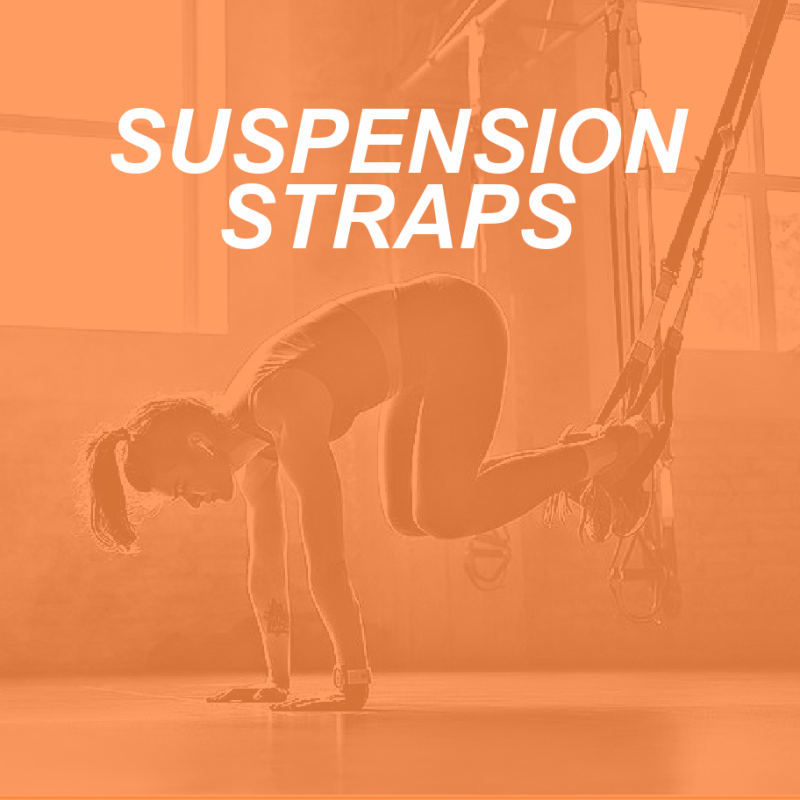
Have you tried using suspension straps in your training sessions? The hanging suspension straps might not look like much, but they’re loaded with potential. Unlike pulleys attached to weights, the straps allow bodyweight, coordination, and gravity to do the work. No weights are attached. It’s just the exerciser and the straps.
Exercises can be geared for beginners, intermediate gym-goers, and advanced exercise junkies.
Benefits of Suspension Training
There are lots of benefits and value to using suspension straps.
• Suspension cables offer a full-body workout for strength training.
• They’re readily available in a lot of gyms. A lot of people don’t know how to use them, so they get overlooked.
• Some styles are appropriate for use at home.
• They don’t take up much room, ideal for small gyms.
• They are easily transported. Some brands even come with a carrying bag.
• The strap workouts add variety to routines.
• Target specific muscle groups.
• Do single exercises or compound movements.
• Build serious strength and confidence at the same time.
How They Work
The two connected straps are made of a durable fabric. The straps are anchored to something overhead. This can be over a mounted pull-up bar, a door closure, or a stationary overhead brace. The anchor should be fastened securely before exercising. A test-run is a good idea before relying completely on the straps for support and balance assistance.
The handles are easy to grip. They are usually made of sturdy plastic or rubber. Cloth loops (also known as foot cradles or stirrups) below the handles are ideal for inserting feet; but they can also be used for a different, more flexible hand position.
Clamps allow lengths of the straps to be adjusted for the intended exercise. For example, if you’re doing pushups or planks with feet in the loops, the straps will be lower to the ground than if you’re doing a standing chest or reverse fly.
Bodyweight and positioning control the intensity. Because the exerciser controls the movement, it’s suitable for all fitness levels. Beginners will likely need instruction.
The straps are great for challenging balance exercises, like standing plank, jackknifes or one-legged squats. Mastering balance with straps takes effort and can be a confidence booster. It also increases the intensity in respective exercises and helps prevent injury in the long run.
Use suspension straps for an entire workout or just part of one. They fit easily in training sessions. Be creative.
Types of Suspension Strap Exercises
There are numerous exercises and plenty of variety using suspension straps. These include:
• Single leg and both leg squats
• Lunges
• Chest press
• Lateral leg lifts
• Plank
• Standing plank
• Chest fly
• Reverse fly
• Pushups
• Jackknife
• Plank jacks
• Tricep Extensions
• Knee-ups
• Bicep curls
• Rows
• Hamstring curls
• Side plank
• Bridge
Precautions
Just like any type of exercise or using exercise equipment, there are some precautions to note when using suspension straps. Anyone new to this type of equipment will need some sort of instruction (trainer instruction, video tutorial, specific classes, etc.). Six things to note:
1. Uneven footing can throw off balance. Double check where the feet are positioned to prevent a mishap.
2. Straps should be taut without any slack while in use. Loose ends should be tucked in.
3. Ensure the straps are even on each side to prevent injury.
4. Adjust the strap length for a given exercise before starting. Too much or too little can throw it off, as well as the exerciser.
5. Be mindful of body positioning and alignment. It’s easy to get distracted when focusing on the straps.
6. The core is actively recruited, so remember to keep it engaged at all times.
References
https://www.glamour.com/story/trx-workout-moves-guide
https://www.verywellfit.com/best-suspension-trainers-4842394
https://greatist.com/fitness/effective-trx-exercises#upper-body
https://www.anytimefitness.com/ccc/getting-started/the-12-most-common-trx-suspension-training-mistakes-and-how-to-fix-them/






